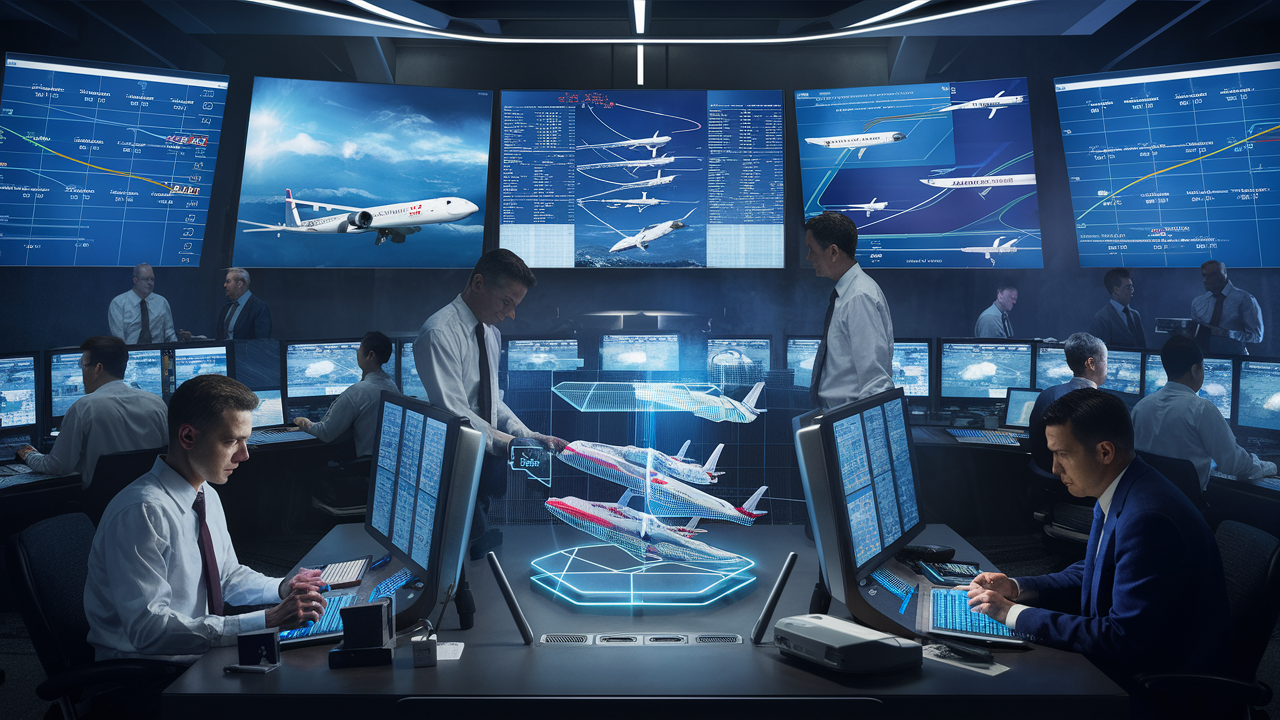Who controls flight paths?

Who Controls Flight Paths?
When you are booking a flight ticket, you may get more concerned with the time of departure, the number of times the plane is going to stop over, and the amount of money that you are going to spend on the ticket as opposed to the route that the plane is going to take in the air. However, the issue of flight paths can only be arrived at after a series of considerations that take into account safety, optimum track, and noise control, among others. But who sets those flight paths that are being over our skies daily?
Major Responsibilities of Air Traffic Control and Airlines
Several factors influence flight paths, and among them is air traffic control (ATC). These professionals ensure that airplanes and other modes of transport are guided on the ground and in the air to accomplish their safety and efficiency objectives. For instance, they get to determine the specific procedures regarding the paths that airplanes take to take off and land at airports, the distances separating planes in the air, and the changes of the route that may be needed because of weather conditions.
However, ATC is still limited and not fully autonomous. In domestic flights, the flight plans are filed by the airlines, where the airline should show a desired path that will take them from point A to point B, taking into consideration efficiency in the consumption of fuel and the presence of turbulence. These requests can be granted by controllers, especially if there are no interference concerns regarding the traffic or safety of a flight. In international flights, there are preferred routings that are arrived at through bilateral agreements between countries on treaties.
Recurrent restrictions might be made for a certain period under circumstances such as sports games or VIP movement, which can extend the restrictions of the routes. Controllers have to consider all these when flying planes through the intended routes from the point of origin to the intended destination in the shortest time possible.
The specific role of the FAA in this instance is to ascertain that all the procedures were followed in the most correct fashion possible.
Air Traffic Control is one of the many responsibilities of the Federal Aviation Administration, which is the government body responsible for administering civil aviation in the United States. It is especially charged with the responsibility of overseeing the NAS, or the National Airspace System, which consists of facilities and equipment such as navigation aids and airports that are used in flying, as well as the rules and regulations governing air traffic.
The FAA approves the routes and the flight procedures that lay down the foundation and form the basis of the permanent structures by which controllers approach traffic tactfully. This involves instrument flight rules (IFR) publications such as approach and departure charts at an airport. Other elements include altitude limitations and performance that also limit routing and are established by the FAA.
Noise Control Impacts
With increased air traffic, noise pollution has also risen to be one of the major challenges and reasons for slow expansion, particularly for airports. This shift helps to solve community noise complaints by directing aircraft over those regions by altering the flight paths occasionally. This can render some flight routings longer than they would have been otherwise, where efficiency is the only consideration.
Notably, the FAA cannot reduce noise levels indefinitely, especially where it compromises safety and operation. But change proposals are likely to incite robust resistance from areas previously not affected by the process. Aimless environmental analyses are needed before the FAA can even get to implementation. However, where there are such measures on noise control, the measures do result in some changes in the flight paths.
Airspace Modernization
There is no doubt that the current air traffic system has boasted impressive safety measures, but rising congestion may distort efficiency. FAA has been pursuing significant steps toward airspace modernization through the Next Generation Air Transportation System (NextGen). One major aim is to move away from the conventional ground-based approach to navigation to a satellite-based approach to navigation.
Implementations for NextGen such as satellite-based routes, curved approaches, and other methods for controllers to better position planes may cause slight changes in the flight paths. These are targeted to offer shorter routings as a means of enhancing efficiency in safety, operational costs, and capacity. Of course, keeping pace with the technology is the same type of balancing act to achieve the best flight solutions, meeting all the demands.
International Airspace Differences
It is much like being in another country where the local authorities regulate the flow of aircraft within its airspace according to their country's laws and rules but have to conform to some degree to international standards. Crossing these air borders, flights may get different routings or restrictions applied to them as opposed to the FAA system.
In oceanic airspace, it is unregulated; in the international region, the flight paths are organized sequences that organize airplanes in the same direction. This can help minimize the burden of monitoring that controllers are often required to perform. These tracks are defined cross-nationally, and that is why countries have to come together to set them.
Thus, while for you as a customer, you might only be interested in the price and timing of the tickets, getting between cities and doing it via optimal flight paths is quite a complex process that involves elaborate cooperation between and among the airlines, air navigation service providers such as FAA, national regulations, and the progression of technology.
Call us at (833) 902-2090 to secure the best deals on flight tickets today. Don't miss out on unbeatable prices for your next adventure!
